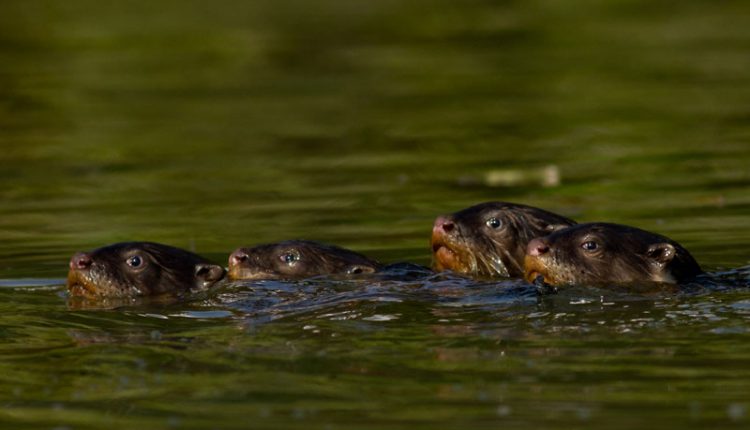Otters are small mammal species that are equally comfortable on land as well as in water. They are known to be the apex predators of the wetland ecosystems they serve a unique biological importance.
There are 13 species of Otters found across the globe, five in Asia and three in India.
Smooth-coated Otter (Lutrogaleperspicillata), Eurasian Otter (Lutralutra) and Asian Small-clawed Otter (Aonyxcineria) are the species found in India. The smooth-coated otter is the largest species of otters in Asia while the Asian small-clawed otter being the smallest.
Smooth-coated otter and Asian Small-clawed otter are globally threatened species and are listed as ‘Vulnerable’ by the IUCN Red List. Their populations are restricted only to Asia. As they are secretive and at times nocturnal in habits very little is known about them in the wild; an opportunity for wildlife researchers to study these magnificent species.
Otters being social animals prefer to live in groups. The group size may vary depending upon the kind of habitat and availability of food resources. Large groups of around 15-20 individuals have been observed in Goa. They follow a simple philosophy
“A family that poops together stays together”
Increase in anthropogenic activities and human settlements have put enormous pressure on their habitats. Informal surveys indicate that their populations have been drastically reduced over the last decade and their habitats are gradually shrinking.
Otters share their habitat with other mammals, birds, reptiles, amphibians and other animals. Being a species that is dependent on riverine habitat, they venture along the rivers in search of food and better den sites. Thus, many otter populations are found outside protected areas.
“We understand that a particular patch of land is a wildlife sanctuary or a national park; Otters don’t”
In human modified landscapes the smooth-coated otters prefer to forage in man-made fishing pools and at times compete with fishermen for fish; an opportunity to study human-otter interactions.
Now that you are more familiar with Otters and their habitat, you can decide.
There are 13 species of Otters in the world, 5 in Asia and 3 in India
Goa is home to 2 species of Otters
Due to increasing human pressures,otter habitats are shrinking.
Otters, once considered to be top predators of wetland ecosystems are now restricted to few pockets of natural landscapes. Even after being highly adaptable species, local populations have significantly decreased in the last 20 years. Sightings that were common have now become extremely rare in most natural landscapes.
- SMOOTH-COATED OTTER (LUTOGALLE PERSPICILLATA)
- ASIAN SMALL-CLAWED OTTER (AONYX CINERIA)
Largest of the Asian Otters
| Total length | Tail length | Weight |
| 106-130 cm | 40-50 cm | 7-11.4 kg |
(The Author a research associate with Mhadei Research Center).


